Where is Structural Soil Used?
/2 Comments/in Environment, Soil, Sustainable Development /by Tanya Richards
Where is Structural Soil Used?
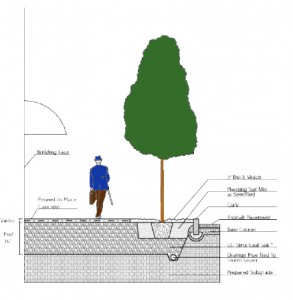 After some experience with gardening and landscaping, you will find that in some cases, standard soil just won’t do. You may need to provide a better, more solid base for large plants such as trees and bushes to grow successfully. This is where knowing about structural soil will help.
After some experience with gardening and landscaping, you will find that in some cases, standard soil just won’t do. You may need to provide a better, more solid base for large plants such as trees and bushes to grow successfully. This is where knowing about structural soil will help.
Structural soil contains larger solid particles and provides more structure that normal soil. These added solid particles create a firm structural base while allowing plant and tree roots to weave around the soil pockets. Structural soil is comprised of a mixture of gap-graded gravels, which are typically made from crushed stone, a hydrogen stabilizing agent and clay loam. This type of soil is perfect when planning to plant trees, especially beside pavement sidewalks or roadways.
Changing Landscaping
Can you picture walking on a beautifully, manicured concrete walkway? Most likely you picture a tree beside this walkway that helps to shape this beautiful image. Structural engineers more often than not will focus on the construction of the concrete walkway or the surrounding road, neglecting the need for a green environment. For this reason, landscape designers are quite important, as they know to choose the right soil for the right result.
By working together with structural engineers, landscape designers are able to successfully grow trees in paved areas. This is normally a challenge due to inadequate soil volume, which is a major requirement for root growth. Soils found under the pavement are usually very compacted, which is the reason why they are unable to support root growth. Only a few trees grow under pavement and when they do, they grow very poorly, dying eventually. It is also worth noting that with the wrong soil the pavement ends up being affected by the root growth. That is why there is need for use of structural soil.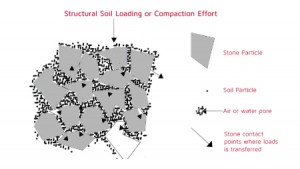
Best Places for Structural Soil
Structural soil has become the best solution for tree-growing in urban settings. This type of soil has been proven to improve tree growth in paved areas, therefore it is the best way to promote street tree planting. Structural soil is used to provide a solid base, which is meant to support masses and at the same time allow for the growth of roots. The result is a perfect crack-free pavement, with a healthy tree growing as expected.
Not all structural soils are the same. They come in different specifications, which are suited for various weather conditions. All the elements that make up structural soil are mixed together. The mix retains a void to allow for water and air movement and gives room for root growth. When used properly, structural soil can allow deep penetration of roots so as to avoid surface heating, which often affects growing trees. Encouraging deep penetration of roots is also good to allow the roots to find sufficient water, necessary for tree growth. This is a great benefit since trees whose roots grow deeply are less likely to lift and crack pavements, leaving you with a great looking pavement and an amazing green environment.
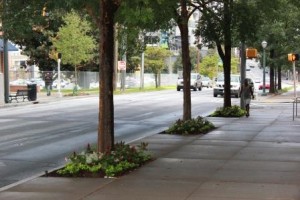 Both structural engineers and landscapers benefit from the use of structural oil. Engineers appreciate a firm foundation for the pavement and landscapers realize trees with sufficient root volume, air and water for growing trees. Structural soil is becoming more recognized in urban settings as it provides an excellent solution for the people within these areas. It satisfies the need to enjoy good roads and a perfect environment at the same time. It is a lasting solution for both structural engineers and landscapers.
Both structural engineers and landscapers benefit from the use of structural oil. Engineers appreciate a firm foundation for the pavement and landscapers realize trees with sufficient root volume, air and water for growing trees. Structural soil is becoming more recognized in urban settings as it provides an excellent solution for the people within these areas. It satisfies the need to enjoy good roads and a perfect environment at the same time. It is a lasting solution for both structural engineers and landscapers.
Save
Does LEED Certification Contribute to Sustainable Development?
/0 Comments/in Environment, Green Infrastructure, Municipal and Infrastructure Journal, Sustainable Development /by Tanya RichardsBUILDEX Express
/0 Comments/in Construction Landscape Journal, Denbow Events, Sustainable Development /by Tanya RichardsSustainable Development Goals – Goals for Green Developers
/0 Comments/in Environment, Municipal and Infrastructure Journal, Sustainable Development /by Tanya Richards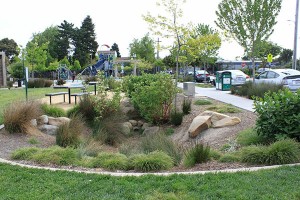 Sustainable Development Goals – Goals for Green Developers
Sustainable Development Goals – Goals for Green Developers
Protecting the natural environment can be a tricky situation especially when you consider human development. At times, the environment works against itself causing health problems for humans, but this is where sustainable development comes in. There has to be a balance between the two in order for this concept to work for future needs. Here are some Sustainable Development projects that work with the environment in a safe, collaborative way.
1. Eco-friendly construction
Eco-friendly construction involves building projects that are not harmful to the environment. In addition to that, the construction project makes efficient use of the available resources. This means that the projects are environmentally friendly and ecologically responsible in planning and actual construction.
This kind of construction, also called green building, is based on the premise that construction in most cases is hazardous in terms of the energy used, distance products have to travel to be used onsite and the environmental impact on the inhabitants and the ecosystem. The following are some of the examples of such construction;
- Recycled shipping containers can be used to build residential houses. This is done to minimize carbon emissions to preserve the environment. Human beings are also able to live in such houses without any health hazard.
- Use of Modcell insulation technology. This technology is used to build carbon-negative structures by use of straw bale. The structures have the best thermal performance rating, are fire-resistant, and straw is a breathable material. Hence they are conducive for human beings and at the same time, they are eco-friendly.
- Clay-based buildings – These structures are formed out of clay mixed with water to form very strong walls. This is cost effective and suitable in areas that are hot and dry.
In green building technology, the focus is usually on the conservation of the environment while at the same time preserving human life. The buildings are designed with bio-architecture technology that minimizes health hazard to humans and creates a balance in sustainable development.
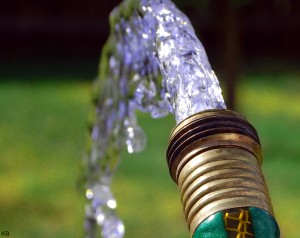
2. Eco-friendly water conservation
Water conservation is one of the sustainable development projects that works well to protect both the environment and human life. Instead of using chemical substances to clean and treat water, there is use of biological waste water treatment and re-use that are non-harmful. For example, constructing an aquatic plant-based system that easily enables microorganisms to digest sewage systems and clean greywater. They can enable residents to have clean water for household use and farming. Secondly, rainwater can also be collected, recycled and used in farming and residential settings. Eco-friendly water conservation is based on the sustainability framework to minimize water wastage and provide clean water for human beings.
3. Use of renewable energy
Renewable energy being one of the Sustainable Development Goals has led to projects that reduce the emission of carbon dioxide and hence reducing the impact of global warming. Renewable energy projects are geared towards having clean, reliable and affordable electricity for both commercial and household use. The affordability of these projects allows rural communities, especially in developing countries to have access to electricity and hence improve their lifestyles.
The use of solar energy, for example, is eco-friendly and thus protects both human life and the environment. Solar energy can be used in households and factories. This helps in creating a green environment by avoiding harmful sources of energy.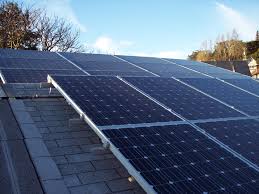
In as much as protecting the natural environment and protecting human life poses a challenge on how to create the balance, there are some interventions that can be made enhance sustainable development. Indeed, sustainable development is a collective responsibility that requires everyone’s effort to make the world a suitable home for the present and future generations.
Save
Importance of a Sustainable Development Strategy
/0 Comments/in Environment, Sustainable Development /by Tanya RichardsWe Agree – It Is Important to have a Sustainable Development Strategy
At Denbow, we know the importance of a Sustainable Development Strategy. Sustainable development is not a buzz word. It’s a real and important aspect we all should consider and include in our business strategy. When we all look at how we engage our business and the impact it has on the environment and our communities, it is easy to see the need for a sustainable development strategy. This will ensure that we all come to a better understanding about how our business, regardless of how big or small, impacts the the environment and implementing a core Sustainable Development Strategy.
We felt it was important to share this introduction to what our Federal Government’s Sustainable Development Strategy will be as they implement their listed goals over the next three years. We hope this can be a baseline for more discussions regarding sustainable development and it’s importance within all of our core business strategies.
What is the Federal Sustainable Development Strategy?
The Federal Sustainable Development Strategy (FSDS) is our primary vehicle for sustainable development planning and reporting. It sets out our sustainable development priorities, establishes goals and targets, and identifies actions to achieve them.
The 2008 Federal Sustainable Development Act provides the legal framework for developing and implementing the FSDS. It requires the Minister of Environment and Climate Change to consult on and table a whole-of-government strategy every three years.
Under the act, 26 departments and agencies are responsible for preparing their own sustainable development strategies that comply with and contribute to the FSDS. Fifteen additional organizations contribute to the FSDS voluntarily.
The 2016–2019 FSDS is the third whole-of-government strategy prepared under the act. It outlines what we will do to promote clean growth, ensure healthy ecosystems and build safe, secure and sustainable communities over the next three years.
Explore our goals
Thirteen aspirational goals support our sustainable development vision and reflect the Canada we want:
Effective action on climate change
A low-carbon economy contributes to limiting global average temperature rise to well below two degrees Celsius and supports efforts to limit the increase to 1.5 degrees Celsius
Low-carbon government
The Government of Canada leads by example by making its operations low-carbon
Clean growth
A growing clean technology industry in Canada contributes to clean growth and the transition to a low-carbon economy
Modern and resilient infrastructure
Modern, sustainable, and resilient infrastructure supports clean economic growth and social inclusion
Clean energy
All Canadians have access to affordable, reliable and sustainable energy
Healthy coasts and oceans
Coasts and oceans support healthy, resilient and productive ecosystems
Pristine lakes and rivers
Clean and healthy lakes and rivers support economic prosperity and the well-being of Canadians
Sustainably managed lands and forests
Lands and forests support biodiversity and provide a variety of ecosystem services for generations to come
Healthy wildlife populations
All species have healthy and viable populations
Clean drinking water
All Canadians have access to safe drinking water and, in particular, the significant challenges Indigenous communities face are addressed
Sustainable food
Innovation and ingenuity contribute to a world-leading agricultural sector and food economy for the benefit of all Canadians
Connecting Canadians with nature
Canadians are informed about the value of nature, experiencing nature first hand, and actively engaged in its stewardship
Safe and healthy communities
All Canadians live in clean, sustainable communities that contribute to their health and well-being
EcoBlanket on slopes at Albion
/0 Comments/in Construction Landscape Journal, Environment, Erosion Control, Slope Stabilization, Sustainable Development /by Tanya RichardsSustainable Development & Freshwater Quality in Canadian Rivers
/0 Comments/in Construction Landscape Journal, Environment, Sediment Control, Slope Stabilization, Streambank Restoration, Sustainable Development /by Tanya RichardsIn our quest for sustainable development, a major consideration must be maintaining the water quality of our streams, rivers and other water sources. These water sources support plant and animal habitats, as well as human commercial, industrial and recreational activities.
The following article on freshwater quality trends in Canadian rivers was originally posted on the Environment Canada website but has been reproduced below for your convenience. As mentioned below, a key factor affecting the quality of water in Canadian rivers is the amount of rain and snowfall during the year, which can carry soil and pollution through runoff and leaching into the rivers. The way that construction development is performed greatly affects the sustainability of our rivers for the long term.
As the article concludes, one important factor in reversing water quality trends in our rivers is to build the health of stream banks by planting native vegetation and trees. Another important part of ensuring the long-term establishment of this vegetation is to rejuvenate and stabilize the soil with compost-based soils and growing mediums, as with Denbow’s Terraseeding service.
Freshwater Quality in Canadian Rivers
The Freshwater Quality in Canadian Rivers indicator is designed to provide an overall measure of the ability of select rivers across Canada to support aquatic life.[1] It integrates multiple pressures from human activity upstream of water quality monitoring sites to present freshwater quality in the regions where the majority of Canadians live.[2]The indicator focuses on rivers with higher risks to water quality and provides Canadians with an indication of human impacts on freshwater quality.
For the 2010 to 2012 period, freshwater quality in Canadian rivers where human activities are most concentrated was rated:
- excellent or good at 45% of monitoring sites,
- fair at 37% of sites,
- marginal at 16% of sites, and
- poor at 2% of sites.
Overall, freshwater quality in Canadian rivers can maintain healthy river ecosystems.
National freshwater quality indicator, Canada, 2010 to 2012 period
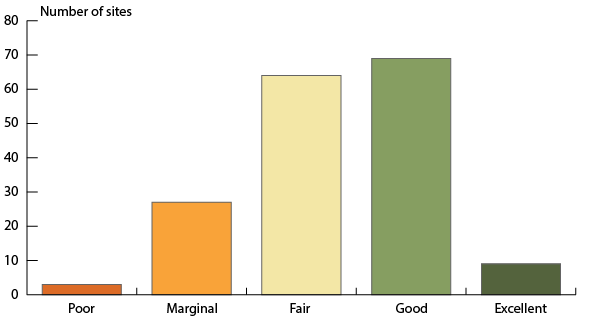
The bar graph presents freshwater quality rating in rivers selected to be representative of the regions of Canada where human activities are most concentrated for the period 2010 to 2012. The bars show the number of sites where freshwater quality was rated excellent (9), good (69), fair (64), marginal (27) and poor (3). Ratings are based on data from 172 monitoring sites.
Note: Freshwater quality was assessed at 172 sites on select rivers throughout 16 of Canada’s drainage regions where human activity is most intensive using the Canadian Council of Ministers of the Environment’s Water Quality Index.
Source: Data assembled by Environment Canada from federal, provincial, territorial and joint water quality monitoring programs.
Clean freshwater is an essential resource. It provides habitat for aquatic plants and animals, supports many commercial and industrial uses, and is at the heart of many recreational activities. Impaired water quality can undermine both aquatic ecosystem health and economic activities, such as fisheries, tourism and agriculture.
Freshwater quality varies naturally across Canada because of the country’s diverse geology and climate. It is further shaped by the ways in which people have developed the land around rivers and lakes. Each freshwater quality monitoring site has its own unique geography and set of human pressures.[3]
The rivers included in the indicators are selected to be representative of the drainage regions in Canada where human activities, such as industry, agriculture, urban growth and recreation, are most concentrated. The potential impacts of these human activities mean that these rivers are generally considered to have a higher potential for water quality impairment. At each site, physical properties of water, such as temperature, and levels of chemical substances, such as nutrients and metals, are measured and compared to freshwater quality guidelines. The more often a freshwater quality measurement is above its guidelines, the lower the freshwater quality rating will be.
Change in the national freshwater quality indicator through time
Between 2003–2005 and 2010–2012, there was an increase in the percentage of sites rated good or excellent and a decline in the percentage of sites rated poor or marginal.
Overall, the freshwater quality scores have:
- improved at 11 sites;
- declined at 4 sites; and
- showed no change at the remaining 85 sites.
National freshwater quality indicator, Canada, change between 2003–2005 and 2010–2012
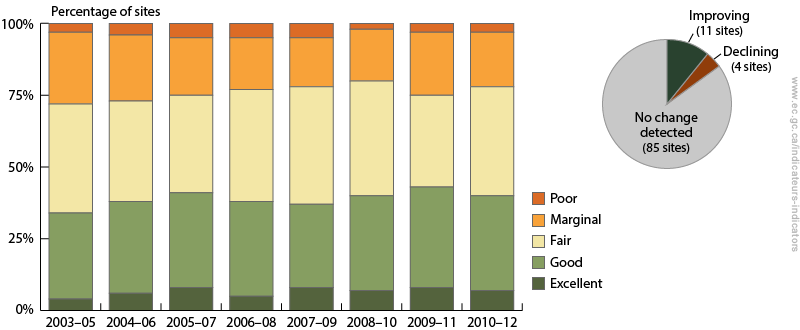
The bar graph shows the percentage of sites where freshwater quality was rated excellent, good, fair, marginal and poor between 2003–2005 and 2010–2012. The inset pie chart shows the number of sites where the freshwater quality indicator has improved, where it has deteriorated, and where no change was detected. Between 2003–2005 and 2010–2012, the freshwater quality indicator rankings have improved at 11 sites and declined at four sites. No change was detected at 85 sites.
Note: Change in the indicator between the 2003–2005 and 2010–2012 periods was assessed at 100 sites in 16 drainage regions across Canada where historical data are available. For each site, change in the indicator was assessed using a consistent set of water quality guidelines and parameters through time.
Source: Data assembled by Environment Canada from federal, provincial, territorial and joint water quality monitoring programs.
Freshwater quality is affected by rain and snow which controls how much water runs off the land or leaches through soils. It is also affected by pollution released directly into it or that travels across land and through the air. Urban growth, agricultural practices and industrial development impact how water moves across the land and change water quality along the way. These multiple pressures on water quality mean freshwater quality trends are slow to change.
The decline in water quality can be reversed by upgrading wastewater treatment plants, adopting environmental farming practices, or planting native vegetation, such as trees, along rivers.
Save
Erosion Control – Ineffective Methods and What Actually Works
/8 Comments/in Erosion Control, Municipal and Infrastructure Journal, Sediment Control, Slope Stabilization, Sustainable Development /by Tanya RichardsNew construction creates conditions that have the potential to cause slope destabilization, dangers to wildlife and fisheries habitats; stormwater runoff increases and results in increased sedimentation. Careful erosion control planning is required to ensure environmental stewardship and safety for generations to come.
In defining an effective approach to erosion control, one should take into consideration both the long-term effectiveness as well as financial feasibility.
The following approaches and methods of erosion control have proved to be ineffective for various reasons:
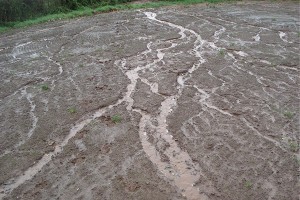 Inadequate site assessment. Though not an end solution, the site assessment is critical when determining which method is used. When important aspects of the site conditions are not taken into consideration, inappropriate “solutions” may be prescribed.
Inadequate site assessment. Though not an end solution, the site assessment is critical when determining which method is used. When important aspects of the site conditions are not taken into consideration, inappropriate “solutions” may be prescribed.
One example of a site condition is the steepness of the slope. The erosive forces of runoff increases with both slope gradient and distance down slope and therefore erosion is typically at it’s maximum at the lowest part of the steepest slope section. Not recognizing or taking into account the destructive force of water during seasonal runoff in scenarios with significant slope and distance will result in ongoing and increasing site erosion.
- A focus on sediment control (managing sediment that has already eroded) instead of focusing on the root of the erosion problem through prevention.Though silt fences and other sediment barriers may be effective in keeping stormwater and fisheries habitats from undue sedimentation, the approach should only be used temporarily. Filter socks like Denbow’s Filtersoxx can be used both as a temporary sediment barriers but also as part of a more comprehensive deployment of erosion control products. Single application solutions, not comprehensive. These methods may provide partial or temporary results but are often not effective for the following reasons:
- Engineered structures – Though usually immediately effective, engineered structures like block retaining walls, do not adapt to changing site conditions, can become progressively weaker over time and are often the most expensive solution. For this reason engineered structures are not always the best method of erosion control.
- Adding rip rap to ditches to minimize/slow runoff. In some scenarios with minimal run-off, rip rap can be effective but in instances with significant water speed and sedimentation, erosion control is not mitigated.
- Adding vegetation alone, without a structural component. Though grasses can create a groundcover that can absorb some moisture, they have no slope stabilization benefits have less effective storm water filtration ability compared to native ground cover.
Erosion Control Solutions that Work
 The solution to these incomplete and ineffective methods is to combine them into a comprehensive bio-structural approach. This approach includes engineered structural components that are paired with natural, vegetative products that will adapt and grow within the site structure over time. Starting with expert consultation to identify the appropriate method, the following are a few combination solutions available for different applications.
The solution to these incomplete and ineffective methods is to combine them into a comprehensive bio-structural approach. This approach includes engineered structural components that are paired with natural, vegetative products that will adapt and grow within the site structure over time. Starting with expert consultation to identify the appropriate method, the following are a few combination solutions available for different applications.
- Similar to hydroseeding, but providing much more of the underlying structure needed to prevent erosion, Terraseeding uses compost-based soils and growing mediums. During the Terraseeding process, seed is injected directly into the soil compost mixture as the material is blown into place, providing optimum moisture and nutrient availability.
- Denbow’s Kicking Horse Canyon Park Bridge project in Golden is an perfect example of combination solutions that utilized Terraseeded EcoBlanket and Filtrexx Rip-rap Grout installed to address erosion and to vegetate extremely steep slopes.
EcoBlanket – On areas with a slope of 50% or less, EcoBlanket is uniformly applied directly at the soil surface with a pneumatic blower as specified by Rexius. Typically applied at a depth of 1 to 2 inches, but application depth can vary depending the site requirements. In extreme conditions and where specified by the Engineer, EcoBerms or FilterSoxx may be added and constructed at the top of the slope and in parallel intervals down the profile of the slope if necessary.
- Extreme slope erosion may require a natural retaining wall solution for reinforcing slopes like Cascadia Green Wall, which allows for natural buffer zone design and water gardens. It is a cost effective solution when compared to concrete, block, gabion retaining walls.
Contact Denbow for an erosion control solution that stands the test of time.
Save
Save

